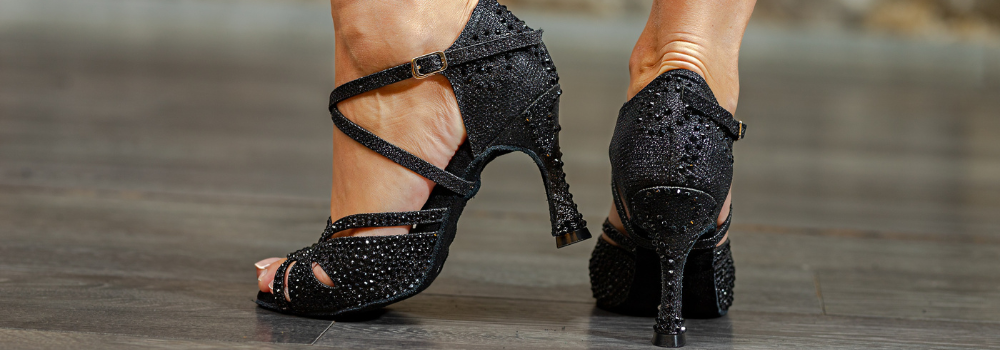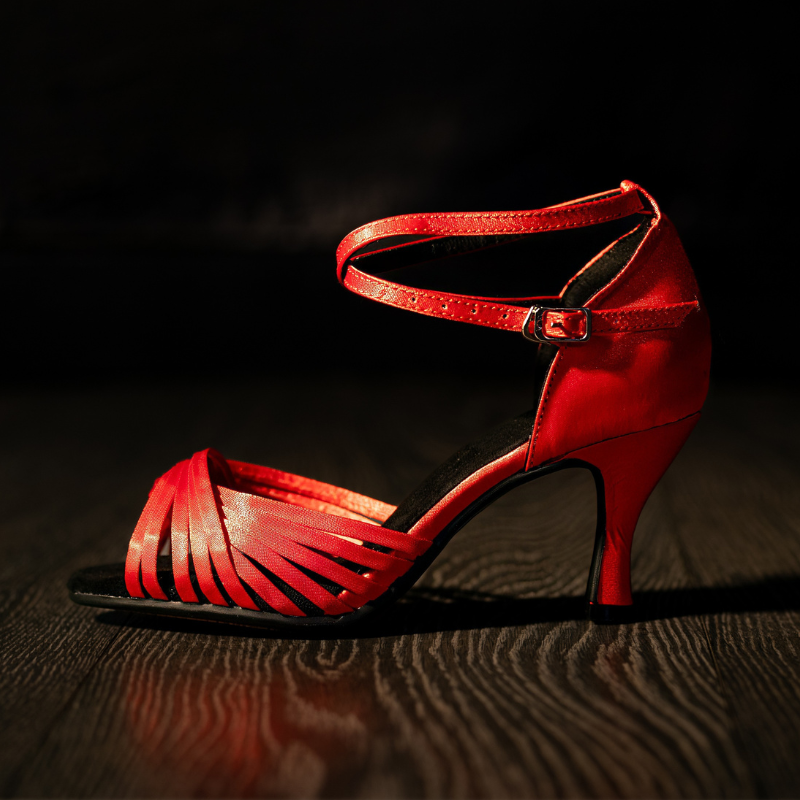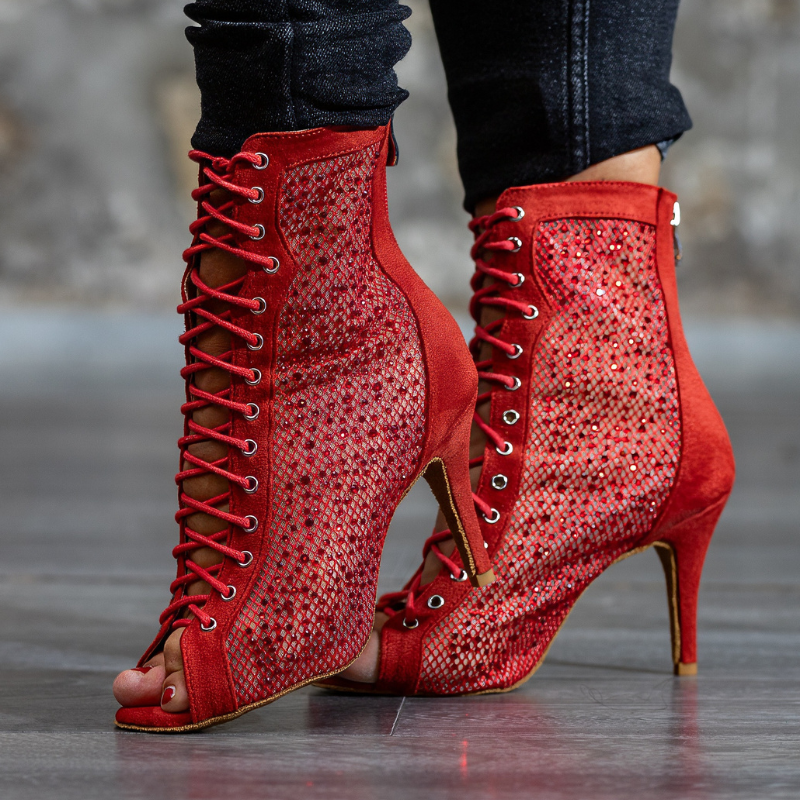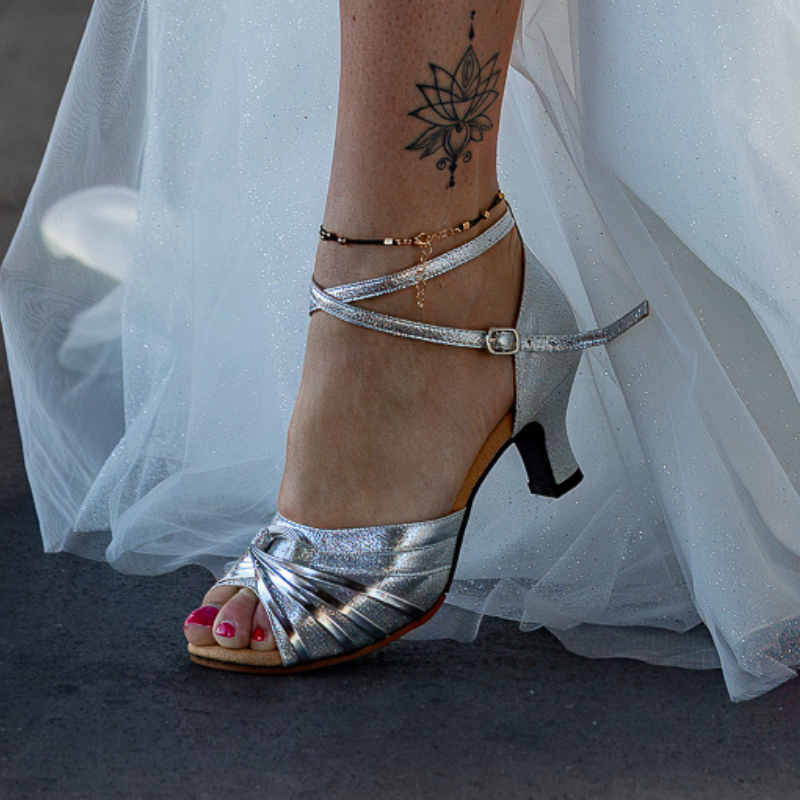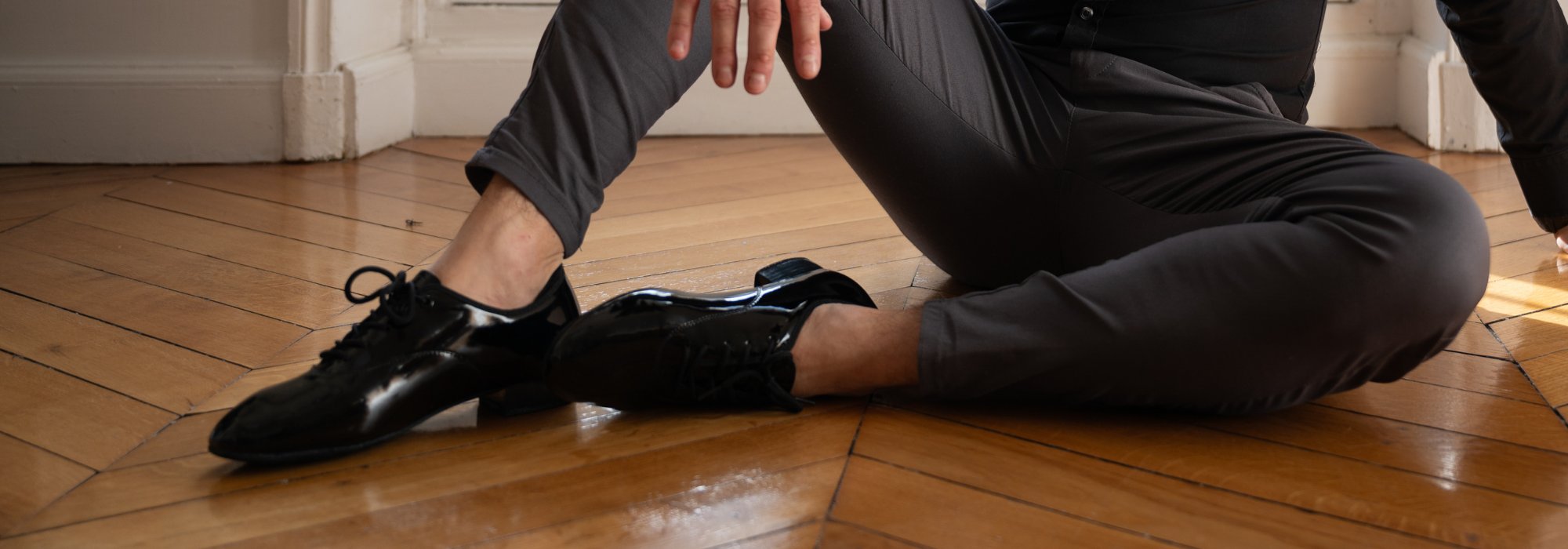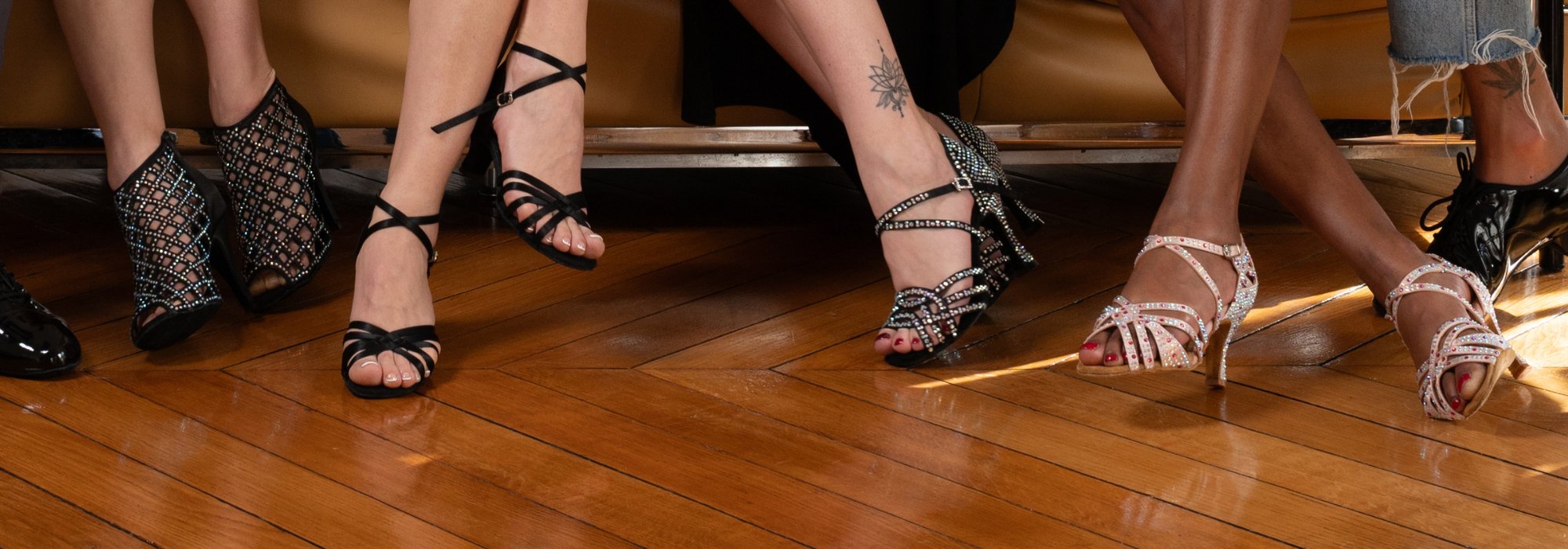How to dance salsa?
You want Learn to dance salsa But don't you know where to start? Wondering how to master this dynamic and sensual dance?
This guide is for you!
Salsa, originally from Cuba, seduced by its catchy rhythm and its expressive movements. Whether you are a beginner or already familiar (era) with other dance styles, you will discover here everything you need to know to start your learning or improve your technique.
In this guide, we will approach:
-
Salsa origins and styles.
-
Essential preparations for dancing comfortably.
-
Bases for beginners and advanced techniques.
-
How to practice alone or as a couple to progress quickly.
-
Where to take a course in Paris.
So ready to dancing salsa ? Let's start right away!
The origins and the history of salsa
Salsa emerge at Cuba, a country where African and Caribbean cultures mix to create a dynamic and expressive dance. There, the musicians integrate the rhythms of his Cuban and rumba, then enrich this mixture with influences from American jazz. These additions include instruments like the trumpet, which energize music and accentuate its festive character.
In the 1930s, artists began to use the word "salsa", which means" sauce ", to describe this fusion of styles. In the United States, radio animators popularize the term by encouraging musicians to intensify their performance with cries of" "salsa, salsa!". This word perfectly represents the energy and diversity of this dance.

The different styles of salsa
Salsa, rich in diversity and expression, is divided mainly into two main categories: the Cuban salsa and the Puerto Rican salsa. Each offers unique variations that allow dancers to explore different rhythms and techniques.
Discover the specifics of these styles and their variations.
Cuban salsa
There Cuban salsa is characterized by its circular movements, its festive energy and its roots deeply rooted in the Latin folklore.
Here are the main sub-series of Cuban salsa:
1. Salsa Casino
The style Salsa Casino is the basis of Cuban salsa. It highlights natural and fluid movements, and the partners evolve around a circular axis while improvising on music.
2. The salsa casino con rumba
This variation adds elements of Cuban rumba, a traditional style influenced by African rhythms. The movements become more expressive, and there are more bodily interactions.
3. Salsa Casino con Afro
In this variant, dancers integrate body insulation and gestures inspired by Afro-Cuban dances which highlight the African salsa roots.
4. SUELTA & CUBANO Styling
This style focuses on solo movements. The dancers, without a partner, work on their fluidity, their personal style and their improvisations ("Shines").
5. Reggaeton
THE reggaeton, although distinct from salsa, often integrates into lessons for its modernity and dynamism. The latter is Inspired by Latin urban music, and brings a Contemporary and festive touch.
Puerto Rican salsa
There Puerto Rican salsa, more linear and elegant, is inspired by living room dances. It is distinguished by its technical precision and its complex figures.
Here are the most popular variations:
1. Puerto Rican salsa - New York Style
In this variant, the dancers evolve on a straight line and synchronize their movements on the second musical step (ON2). This style emphasizes finesse and fluidity.
2. Salsa Shine
THE salsa shine consists of Movements carried out solo which allow dancers to express themselves freely while highlighting their technique and creativity.
3. The Lady Styling
THE Lady Styling Addresses the dancers and focuses on the grace and elegance of the movements using the arms and body insulation.
4 The Tours technique
This subcategory aims at perfew, a key element of Puerto Rican salsa. Dancers learn to control balance, posture and speed.
5 Salsa Shine & Styling
This style combines the solo work (shines) With styling elements, in order to offer a complete and expressive performance that mixes technical and aesthetic.

How to prepare to dance salsa?
1. Choose an outfit and suitable shoes
Dancers often opt for Light and flexible clothes which facilitate their movements. They favor shoes with thin and flexible soles to easily slide on the track while keeping good control. They avoid too high heels or shoes with slippery soles, as they can cause falls or limit their agility.
2. Adopt a correct posture
The dancers stand straight, with an aligned spine, slightly lifted chin, and relaxed shoulders. They slightly bend their knees to maintain a good balance And let their hips free to move. They concentrate their weight in the center of their body to ensure a optimal stability Throughout the dance.
3. Get familiar with the rhythm
The dancers listen carefully to Salsa music To understand his rhythm in 8 times, noting the breaks in the 4th and 8th time. They train to hit their foot or transfer their weight from one foot to another to integrate this rhythm into their movements. This preparation allows them to stay in tune with music from their first steps on the track.
4. Find an adapted space to train
Beginners choose a space cleared with smooth soil To avoid obstacles and minimize the risk of injury. If they train at home, they give off an area to make sure you can practice without interruption. This environment Promotes a fluid and secure practice.

The basic steps for a beginner in salsa
1. The base of the leader
The leader always starts with the left foot and performs the following sequence:
-
Advance with the left foot (time 1).
-
Lays the right foot to its initial position (time 2).
-
Back down the left foot to the starting point (time 3), then marks a break (time 4).
-
Back with the right foot (time 5).
-
Lay the left foot to its initial position (time 6).
-
Advance with the right foot to return to the center (time 7), then marks a break (time 8).
2. The basic steps of the follower
The follower performs the leaders' mirror movements:
-
Back with the right foot (time 1).
-
Lay the left foot to its initial position (time 2).
-
Advance with the right foot at the starting point (time 3), then marks a break (time 4).
-
Advance with the left foot (time 5).
-
Lays the right foot to its initial position (time 6).
-
Recule with the left foot to return to the center (time 7), then marks a break (time 8).
3. Side steps
The dancers complete their basic movements with not lateral.
-
The leader begins with a step on the left side at first, then brings his feet together.
-
The follower takes a mirror step on the right side.
These steps add fluidity and allow you to vary the simple figures.
4. Movements to gain fluidity
The dancers repeat the sequences several times, first slowly, then following suitable music. They train solo or with a partner to strengthen their coordination and develop their ease on the track.
Here is a short video that should enlighten you on the basics of salsa.

How to dance salsa as a couple?
1. Adopt the starting position
Partners are placed in closed position to start. The leader puts his right hand on the top of the back or the left shoulder blade of the follower, while the latter rests her left hand on the right shoulder of the leader. Both hands free meet slightly in height to form a frame. This position promotes a natural synchronization and facilitates guidance.
2. effectively guide movements
The leader communicates his intentions to the follower by Subtle indications, like a slight pressure of the hand or a movement of the arm. He uses precise gestures to indicate the towers, breaks, or direction changes. The follower remains attentive to these signals and instinctively interpret them to execute the figures.
3. Execute basic figures in torque
The partners integrate simple figures to enrich their dance:
-
Cross body lead : The leader invites the follower to cross her axis while performing a U-turn. This figure fluidifies the transitions and adds dynamism.
-
Simple towers : The leader guides the follower to go to the right or left. These towers require precise coordination and strengthen the connection between the partners.
4. Maintain constant communication
There couple dance is based on a clear and fluid communication. The leader guides with confidence but without forcing, while the follower follows with a slight tension in the arms to capture the intentions. This subtle dialogue creates harmony and strengthens alchemy on the track.
5. Correct errors and adjust
Partners adapt each other in the event of errors, taking up the basic steps to find their synchronization. They regularly practice to refine their technique and build mutual trust.
How to practice and progress in salsa?
1. Training alone to perfect the movements
The dancers repeat no base, THE towers and simple figures solo to strengthen their muscle memory. They use mirrors to check their posture and movements, which allows them to correct any errors. They are also exercised to type the pace for Synchronize their steps with music.
2. Practice regularly with a partner
There Salsa as a couple improves coordination and connection. Partners train to communicate their intentions through specific gestures and repeat the figures to fluidify their transitions. They start with simple movements before integrating advanced techniques.
3. Participate in dance lessons
The dancers join collective lessons or private lessons To learn from experienced teachers. These courses offer a structured environment where they can ask questions and receive real -time corrections. In addition, they allow you to meet other dancers and be inspired by various styles.
>>> If you want take salsa lessons, Salsanueva offers it in Paris.
4. Frequent Special Salsa evenings
THE Salsa -dedicated evenings offer an ideal opportunity to put learning into practice in a friendly setting. The dancers get used to evolving on crowded tracks and adapting to different partners. This experience improves their ease and their capacity for improvisation.
5. Set clear objectives
Dancers establish specific objectives such as Master a specific tour Or chain several figures without error. They set a calendar to measure their progress and remain motivated by celebrating each step taken.
6. Film training to analyze progress
Dancers record their sessions For Identify their weaknesses And work on it. These videos also allow them follow their evolution and locate improvements.

Where to dance salsa in Paris?
Here you are, you now know How to dance salsa, whether you are a beginner or dancer in search of improvement. We explored the origins of this dance, the different styles, the basic techniques, as well as tips for progressing quickly, alone or as a couple.
Dancing salsa is not limited to technique, it is also a way to share intense moments and immerse yourself in a vibrant culture. So why not start today?
If you want to perfect your steps or start with professional supervision, Salsanueva welcomes you to: Blue studio - Hall 1, 32 rue du Captain Marchal, 75020 Paris.
Take advantage of a friendly learning and immerse yourself in the warm salsa atmosphere with courses adapted to all levels.
→ Join now Salsanueva lessons And dance to the rhythm of Cuban passion!

